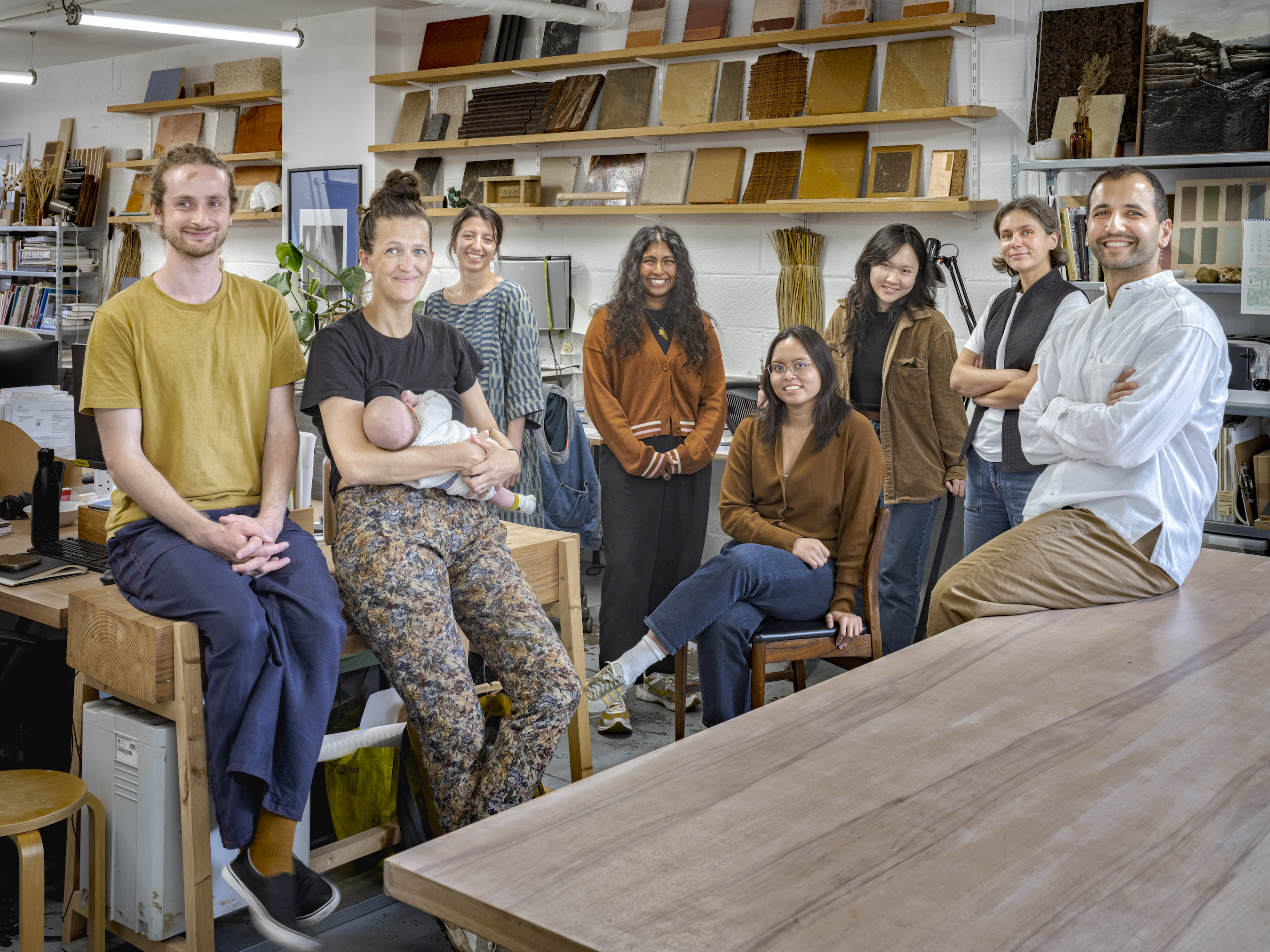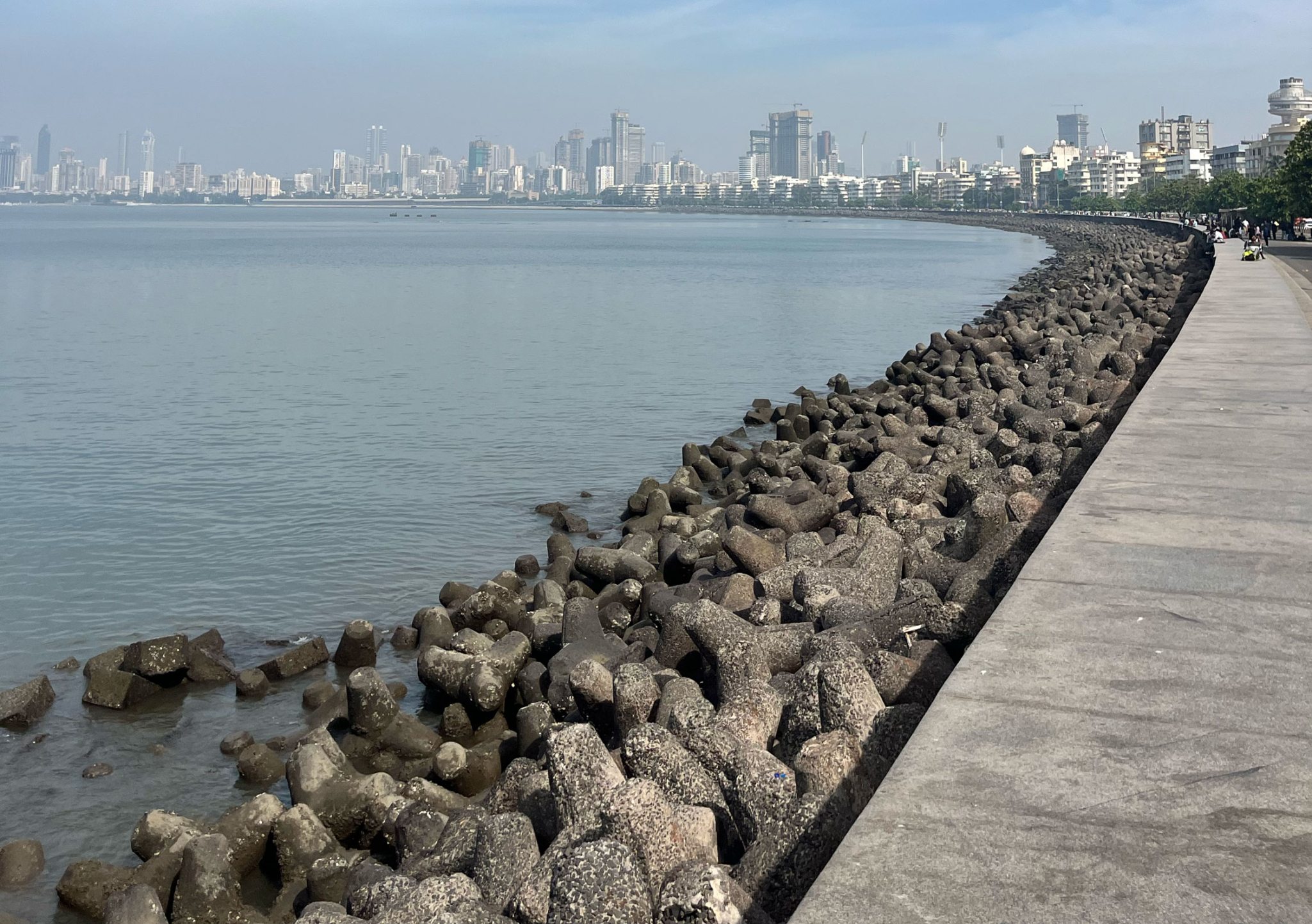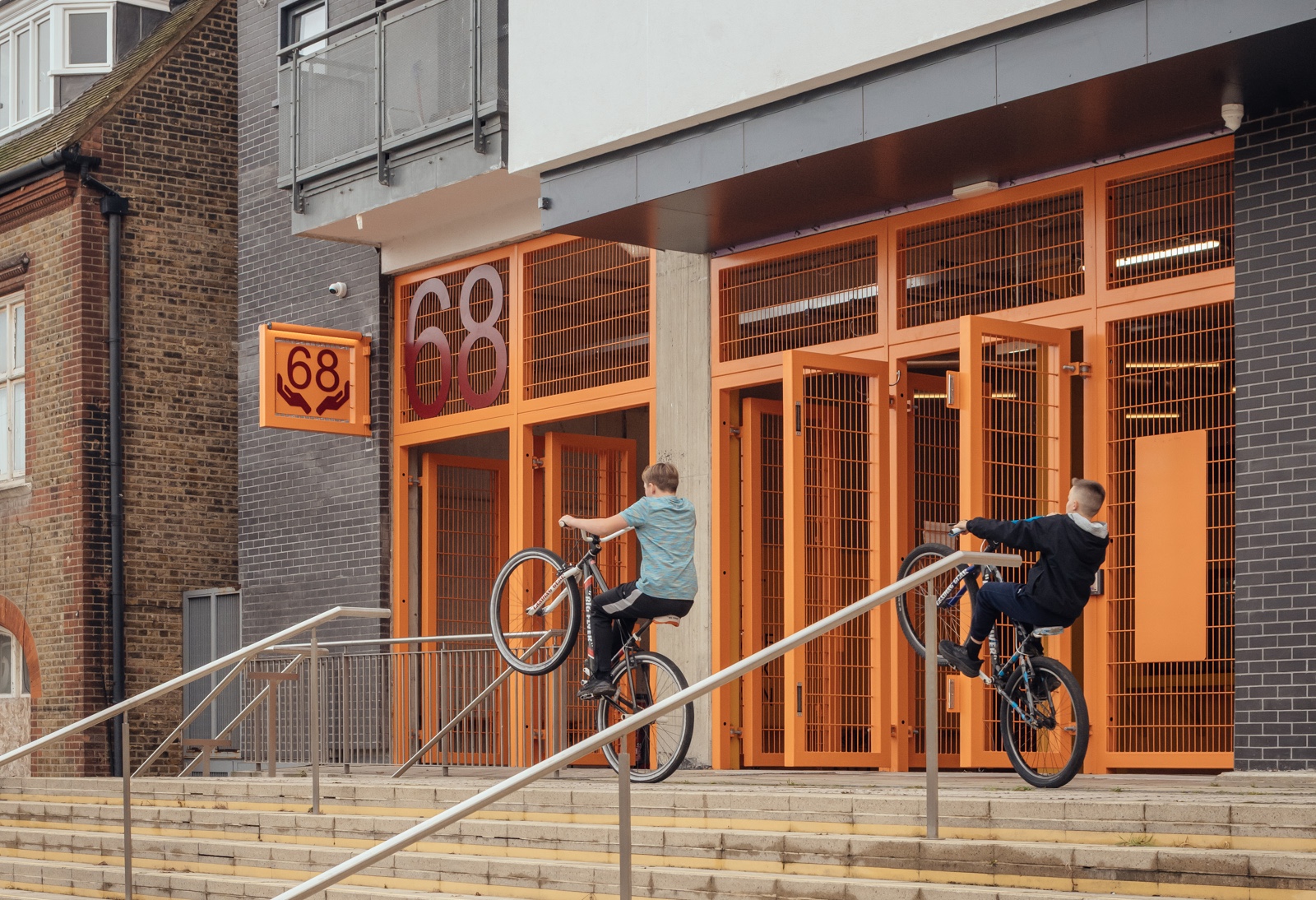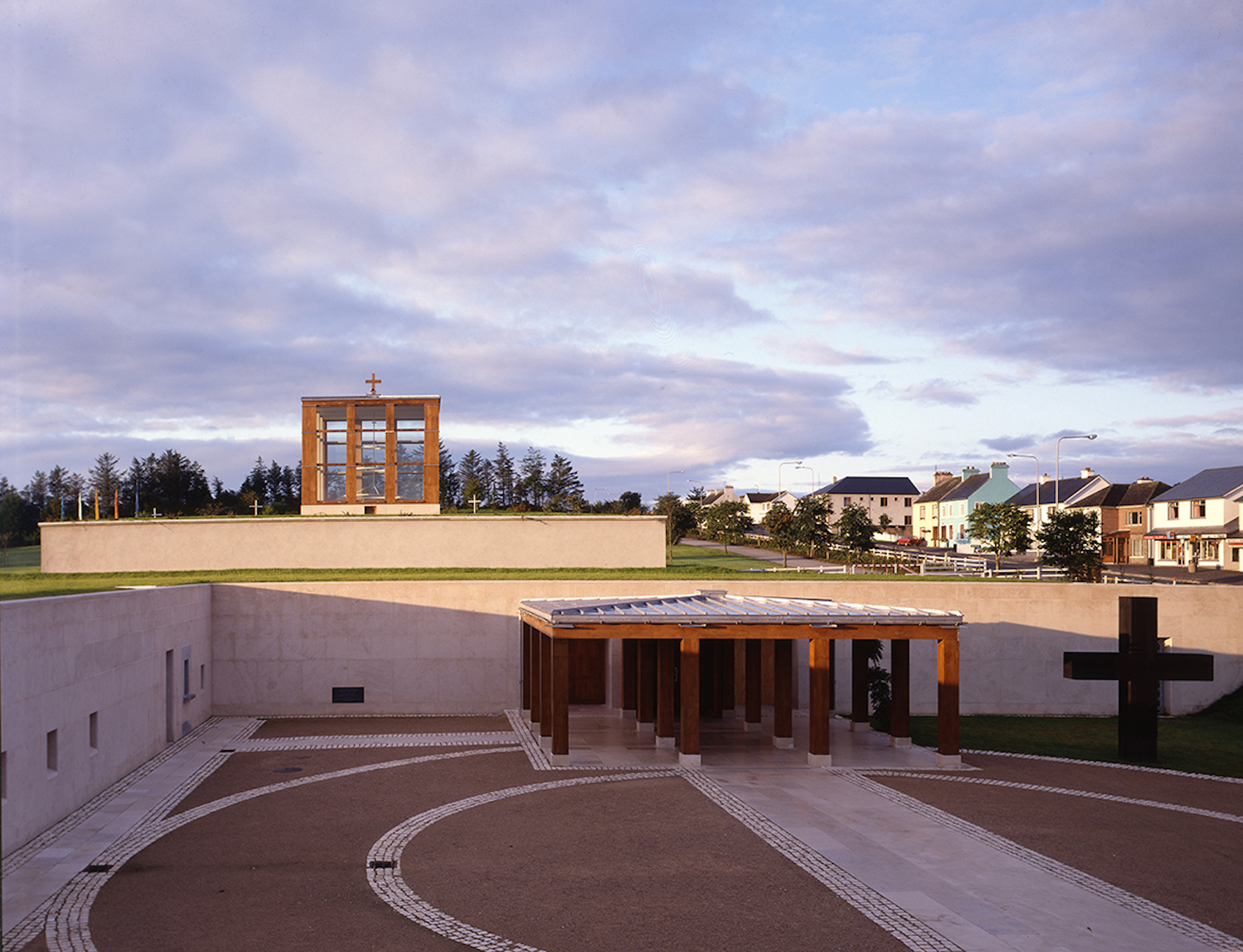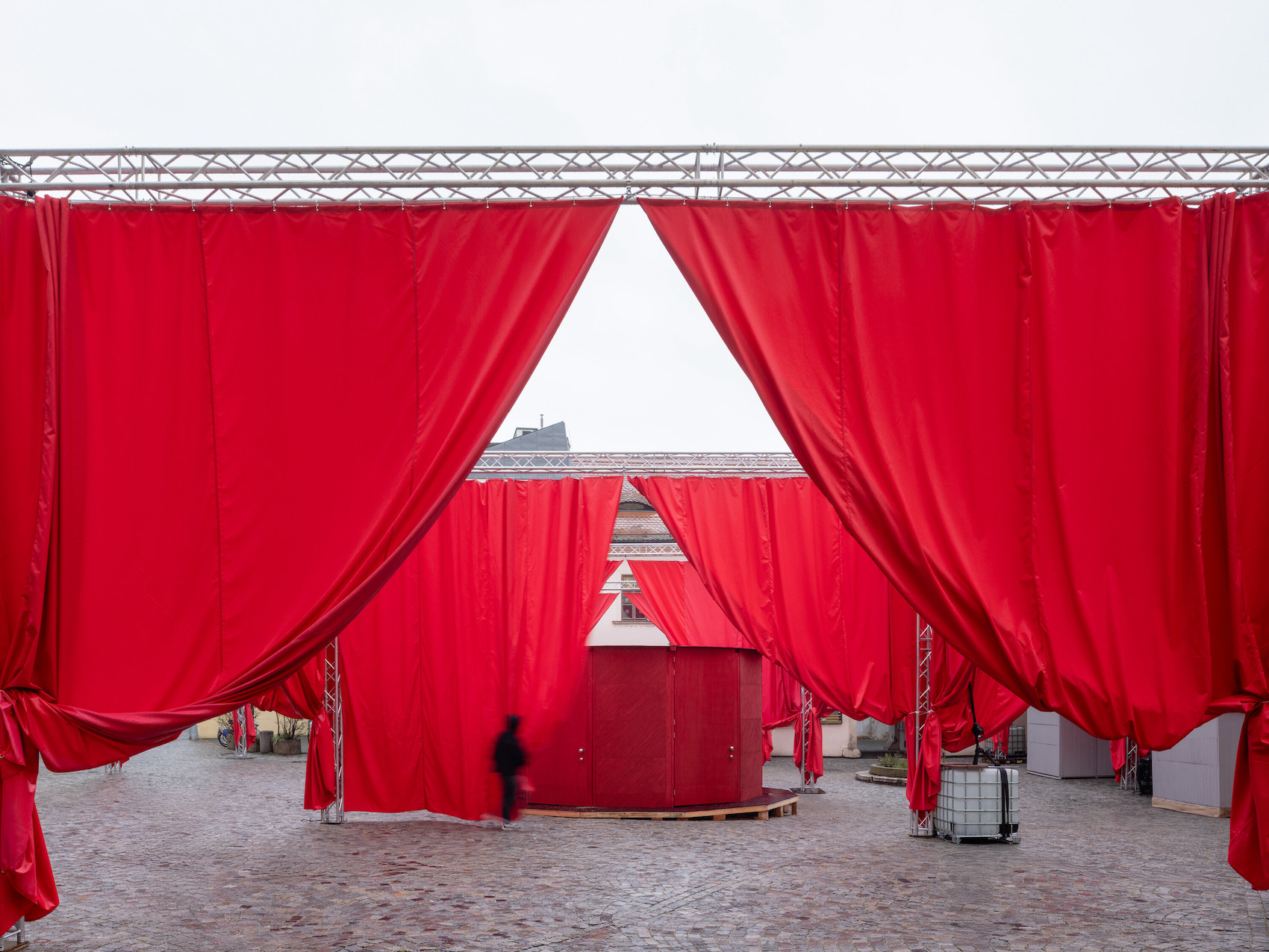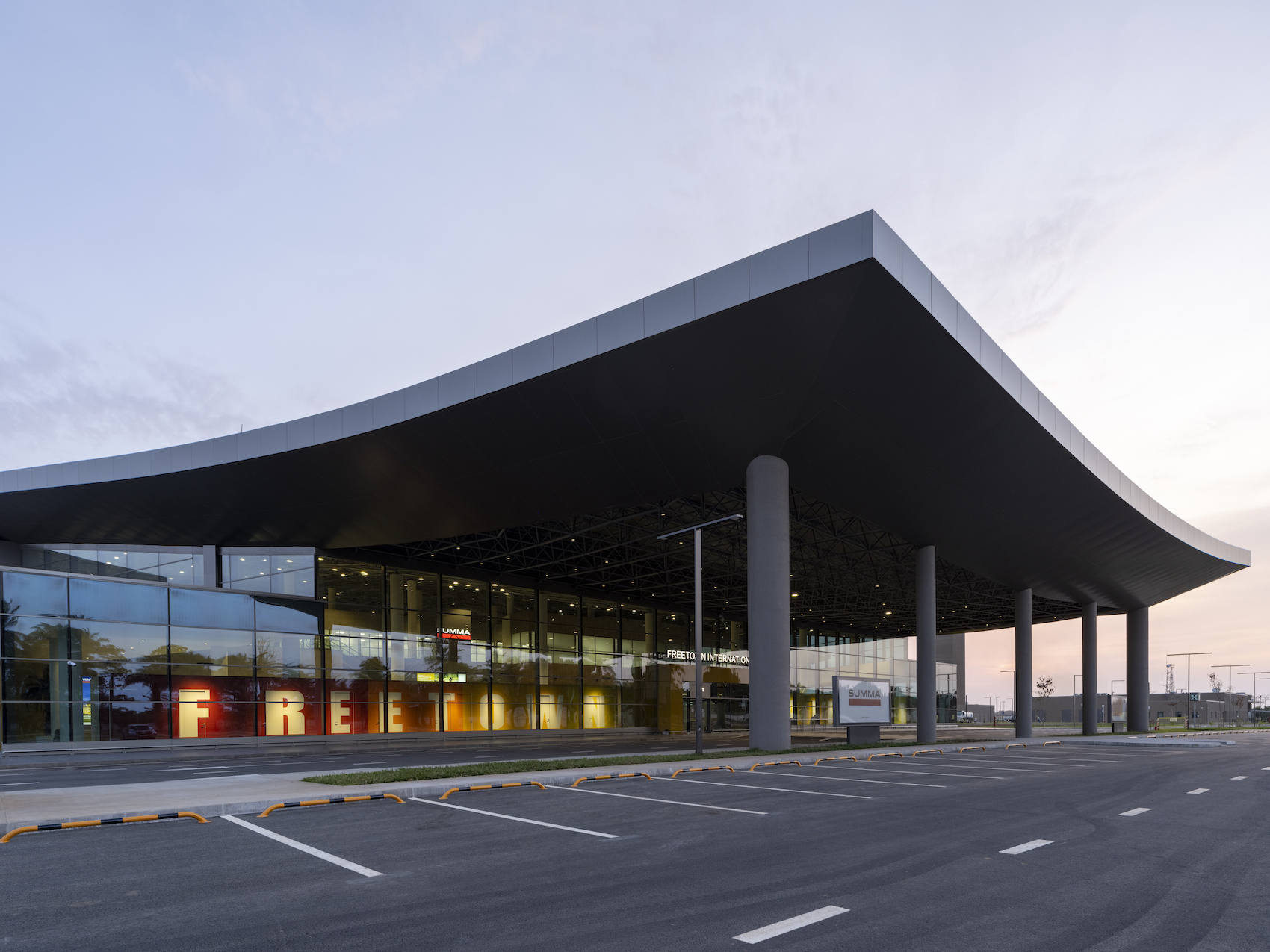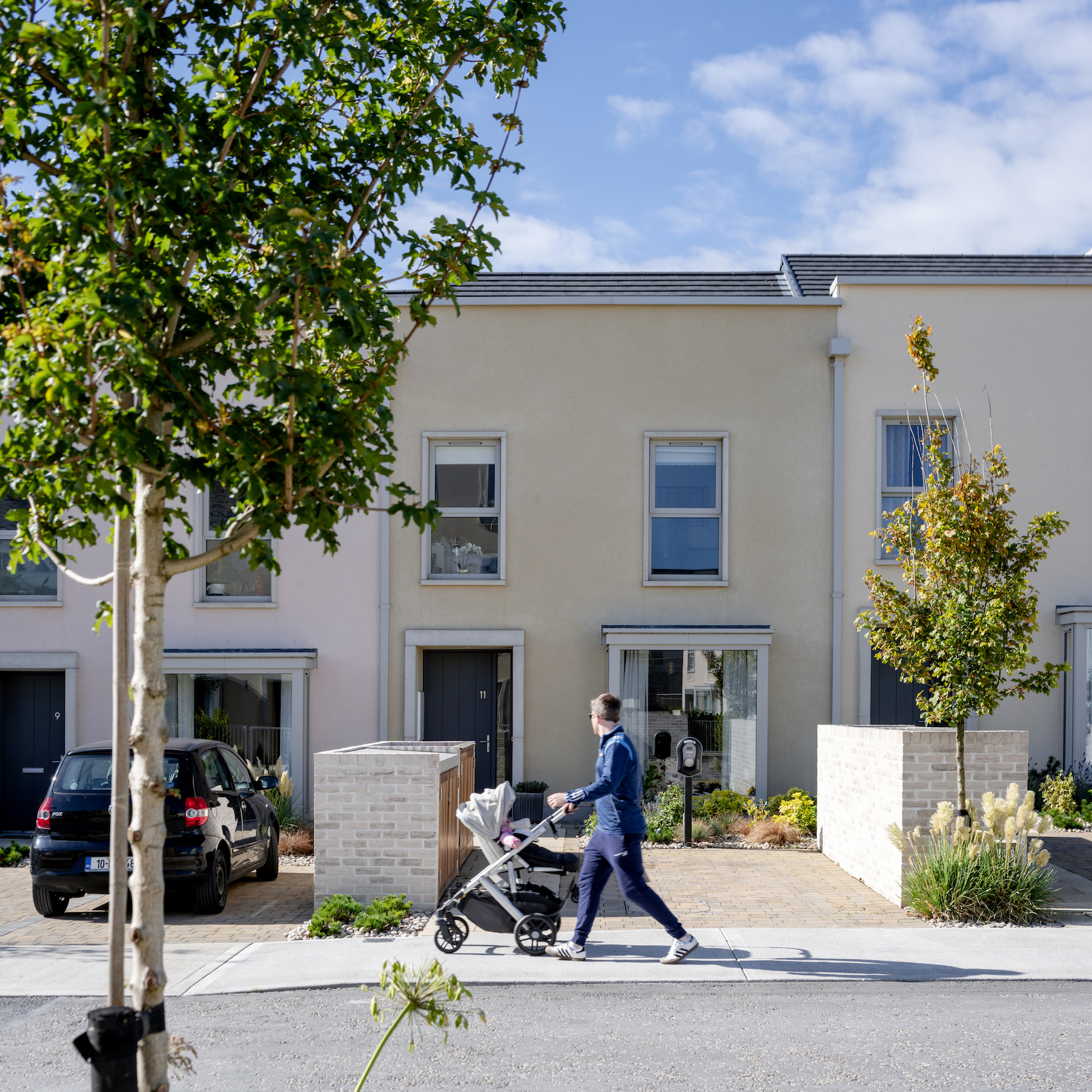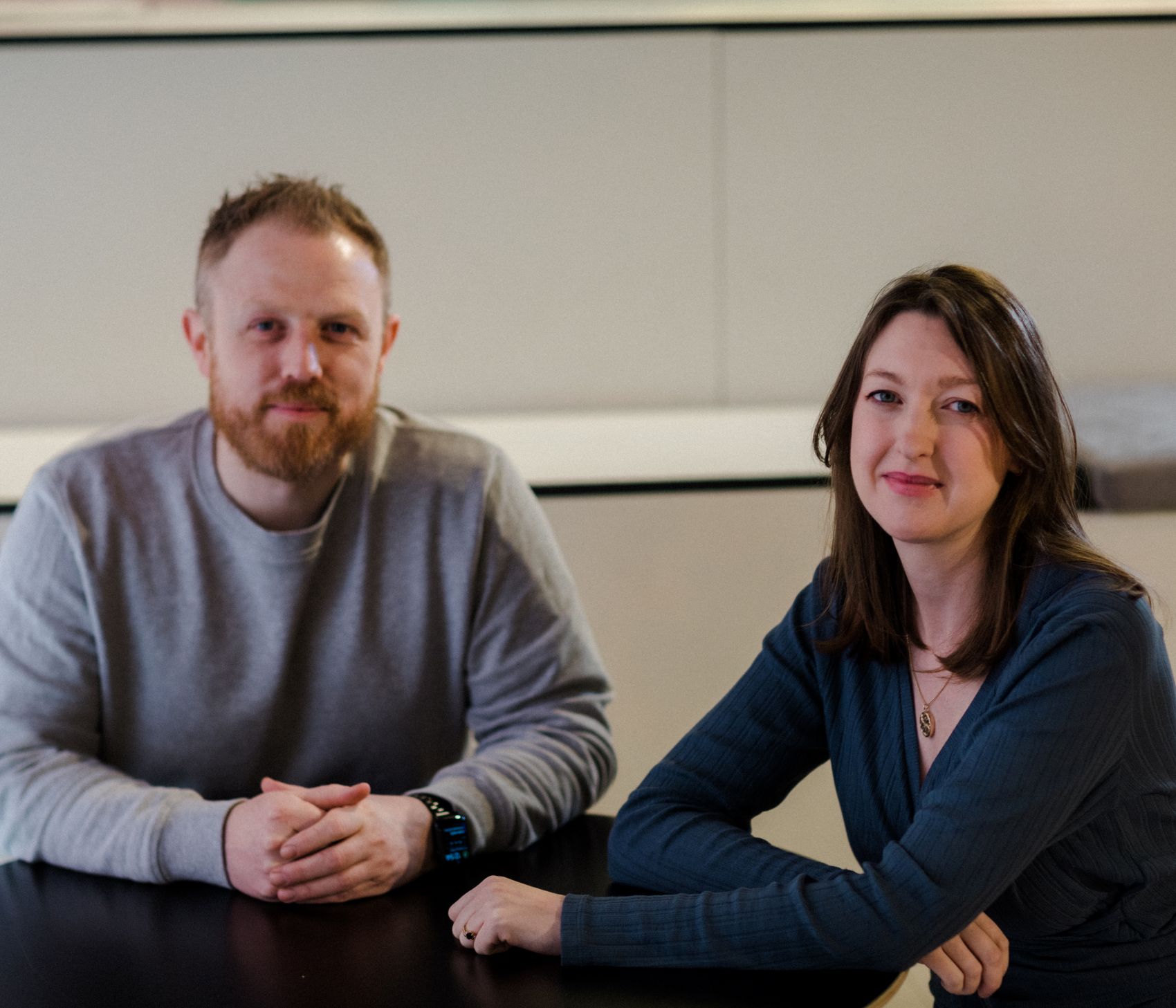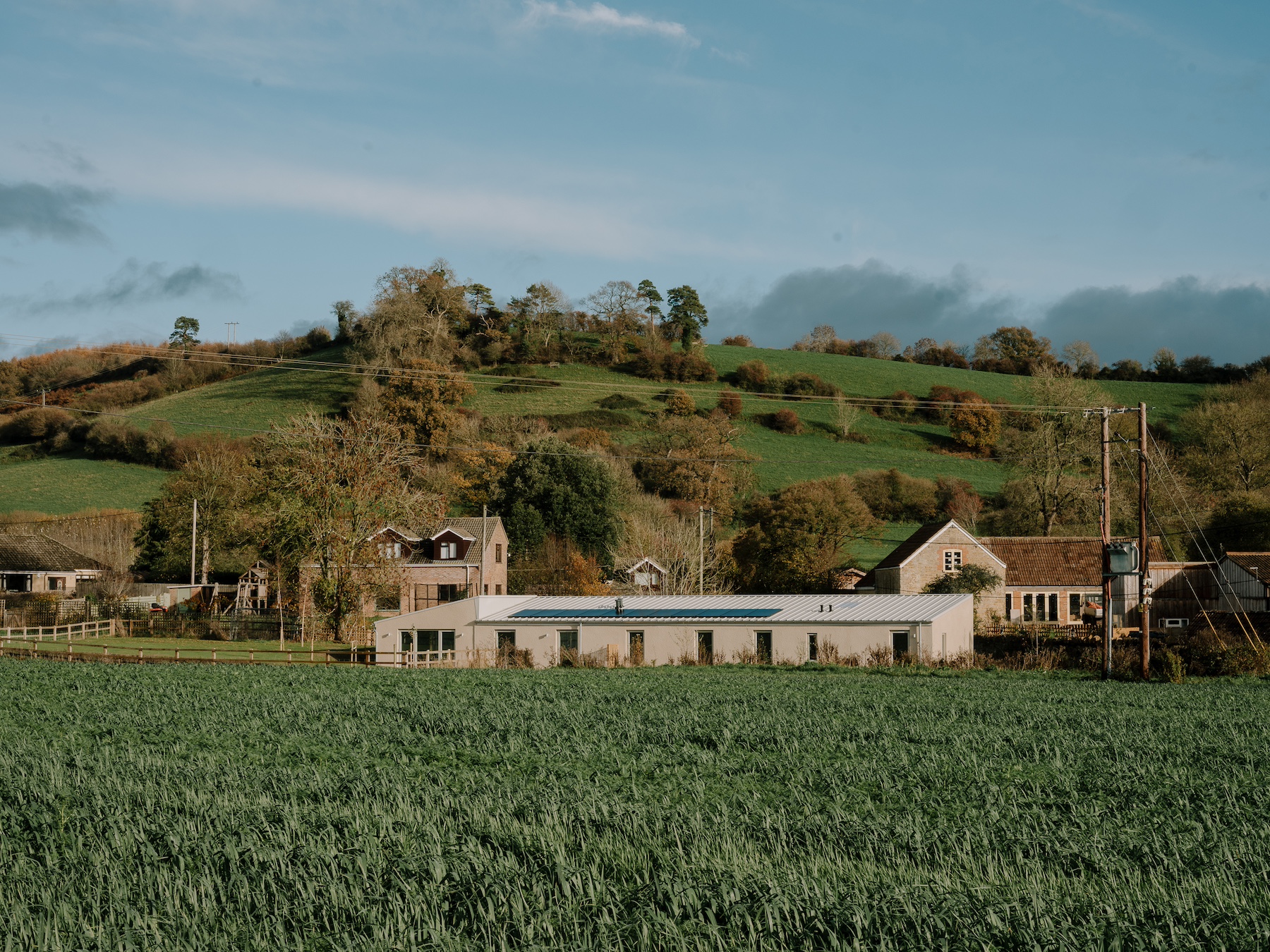British Land and AustralianSuper’s Canada Water regeneration scheme rests on its ability to tempt corporate tenants to an untested part of town. As the project’s first commercial building opens for business Isabel Allen asks whether the gamble has paid off.
Roger Madelin is in an ebullient mood. It’s five years since British Land obtained planning consent for an Allies and Morrison-designed masterplan to transform Canada Water in south-east London into the capital’s buzziest neighbourhood. The project, which is now being delivered as a 50:50 joint venture between British Land and AustralianSuper, working in partnership with Southwark Council, was nothing if not ambitious: the regeneration of 53 acres of disused ducks and a dystopian landscape of 1980s shopping centre, nondescript retail sheds and the Daily Mail’s now defunct printing works into a mixed-use quarter of two million square feet of workspace and another million square feet of retail, cultural and leisure facilities and between 2,000 and 4,000 new homes. British Land poached Madelin from Argent hot-on-the-heels of the Kings Cross regeneration project, upping the pressure on all parties to trump the most triumphant urban transformation project of recent years. And frankly, the outlook didn’t look good. This was Canada Water, not Kings Cross; a forgotten corner of London’s industrial hinterlands as opposed to its fabled beating heart.
But what the location lacked in profile it made up for in natural assets. “Looking back at Kings Cross, I would have loved to have had what Canada Water’s got” says Madelin. The site is surrounded by 126 acres of woodland, dockland and parkland. The 64-acre Southwark Park – complete with running track and boating lake – at the western edge of the development, and the 37-acre Russia Dock Woodland and Stave Hill Ecological Park at the eastern edge are soon to be connected by a 700m park walk. Greenland Dock provides the urban quarter with a yacht club and opportunities for wild swimming while its neighbour, Canada Dock, has been freshly cleaned up and reinvented as a habitat for wildlife on the basis that, as Madelin puts it: “We thought wouldn’t it be nice if you could start your walk to work by walking through wetlands and watching cygnets.” And this, of course, is the point. The success of the project is entirely dependent on its attractiveness as a workplace.
A series of ‘wow’ moments includes Canada Water Boardwalk, a snaking scarlet walkway designed by the artist Asif Khan.
“In the 90s there were all these books like Frances Cairncross’s The Death of Distance that talked about the way technology would take away the necessity of going into the office.” Madelin recalls. “But I just felt the city centre was always going to survive because that’s were people wanted to come. You might get the demise of the business park but places like Kings Cross and Broadgate were going to become more important and more valuable.” People like the buzz, of course, and the history and the culture. But Covid, and the attendant focus on health and wellbeing, put a whole new premium on natural environments and open space. “What Covid demonstrated was that everybody could decide not to come into the office. You have to design places that make them feel heathy and happy.” And you have to convince companies that a Canada Dock address will give them the profile – and attract the workforce – that they need.
So what’s the magic formula? “It helps if we can create a number of wow moments,” says Madelin. Most obviously, that includes the Canada Water Boardwalk designed by the artist Asif Khan, a snaking scarlet walkway that crosses Canada Water linking Canada Water station to Surrey Quays shopping centre.


“Purposeful and powerful” the architectural language was conceived as a 21st century take on a classic docklands warehouse.
Dock Shed, an Allies and Morrison-designed 180,000 sq ft BREEAM Outstanding and NABERS 4.5* workspace, and the masterplan’s first completed commercial scheme, has a touch of bling itself. Well, bling by Allies and Morrison standards, which is to say not really blingy at all. The party line is that it’s “a 21st century take on a classic docklands warehouse”. which explains the saw-tooth steel roof, but not so much the twisted gold balcony facings, which bring to mind the poles on a Victorian merry-go-round. Allies and Morrison frames the architectural language in rather more serious terms; an attempt to produce a “purposeful, powerful” building that echoes the muscularity and presence of the timber sheds that used to line the docks. Whatever. It looks great. The question is whether corporate HQs – the target market for the building’s 45,000ft2 floorplates and 12m spans will approve of the emerging vernacular of industrial/commercial hybrid with a dash of of fairground joie de vivre.
The reception takes its inspiration from hospitality and residential settings rather than conventional office design.
The industrial language continues inside, where the ground floor of the building is given over to a vast, seven-metre-high reception area/social space with polished concrete floor, exposed concrete soffits and vast trusses that support the floors above. Conran and Partners has fitted out the space with a mixture of meeting rooms and social space, and everything in between. Simon Kincaid, Principal and Partner at Conran and Partners, describes the look and feel as “balancing elegance with casual comfort” explaining that the practice “approached the interior design with the same mindset we bring to hospitality, creating spaces that are welcoming and full of character to draw people together. Introducing a café into the lobby of the first commercial building was a deliberate move to foster a sense of community and social activation from day one. The interiors are purposefully unexpected, from sculptural rope installations to furniture and finishes that draw inspiration from hospitality and residential settings rather than conventional office design, whilst nodding to Canada Water’s rich history.”
Floor-to-ceiling windows take advantage of spectacular views and flood the workspace with natural light.
Floor-to-ceiling wraparound windows ensure that office floors are bathed in daylight, while openable windows enhance fresh air circulation. Generous terraces overlooking Canada Dock encourage outdoor meetings and social events. They also serve as informal breakout areas and relaxation zones providing an opportunity to enjoy the building’s waterside surroundings and views of the London skyline. North facing rooflights flood the top floor with natural light.
On the lower floors and basement of the building Allies and Morrison and Roberts Limbrick have designed a state-of-the art leisure centre complete with yoga studios, sports hall, 25m-long swimming pool and a 150-seat gym. Part of a deal with Southwark council, this will be open to the public; reflecting a policy of embedding ‘new’ Canada Water within the existing community.
The jumbled informality of the garden contrasts with the austerity of the rhythmic south-facing façade.
Madelin’s modus operandus is notable for a philanthropic pragmatism that plays out well in public sector negotiations and public consultation, but also pays dividends in commercial terms. The Canada Water team works closely with local schools and charities to establish opportunities for corporate volunteers, which Madelin views as a key component of a successful workplace: “You’ve got to look after people, and it’s not just about physical health and wellbeing, but about mental health too. Volunteering makes life feel more worthwhile than just turning up to the office, logging in, and working an eight hour day.”
People working in the building – or indeed living in the neighbourhood – can take advantage of an ever-growing smorgasbord of dining, retail and leisure opportunities. A disused unit in the unlovable Surrey Quays shopping centre has been converted into Corner Corner, a jazz club-come-food hall complete with food and drink pop-ups, live music and London’s largest indoor commercial farm which supplies high-end local eateries with 20 tonnes of salad leaves every year. If that’s not exciting enough, the building also plays host to Minecraft Experience: Villager Rescue (essentially an immersive, interactive scavenger hunt where participants collect resources for a potion to save villagers who have been turned into zombies, in case you were wondering). A proposal for four Padel courts received planning consent last week. And there’s plenty more to come. Future phases include Hawkins\Brown’s reworking of the former Daily Mail building as the cultural venue Printworks, scheduled to open in 2026. Once home to the largest printing factory in Western Europe, the reinvention will preserve the outsize machinery and printing presses to create an industrial backdrop for a wide range of events becoming a vital part of the city’s cultural scene.


A redundant corner of Surrey Quays shopping Corner Corner, a centre for refreshment and live music and home to London’s largest indoor farm. Photographs by Sophia J Carey.
But is it enough to attract its corporate tenants? There’s certainly plenty to attract the workforce. In an admittedly not highly scientific analysis I can report that the neighbourhood feels busy and buzzy on the day I visit. Corner Corner is populated by a happy gaggle of hipsters and young professionals who look as though they could have been cherry picked by Central Casting. And it’s straightforward to ship them in. A key transport interchange, Canada Water connects the Jubilee Underground Line with the Windrush Overground Line. Madelin is keen to cite research carried out by JLL that produced the startling statistic that more under-35s are able to reach Canada Water within 45 minutes than any other central London commercial hub. It’s easy to see why Madelin looks so chipper. The project that once seemed like a bit of a punt is starting to feel like a pretty good bet.









